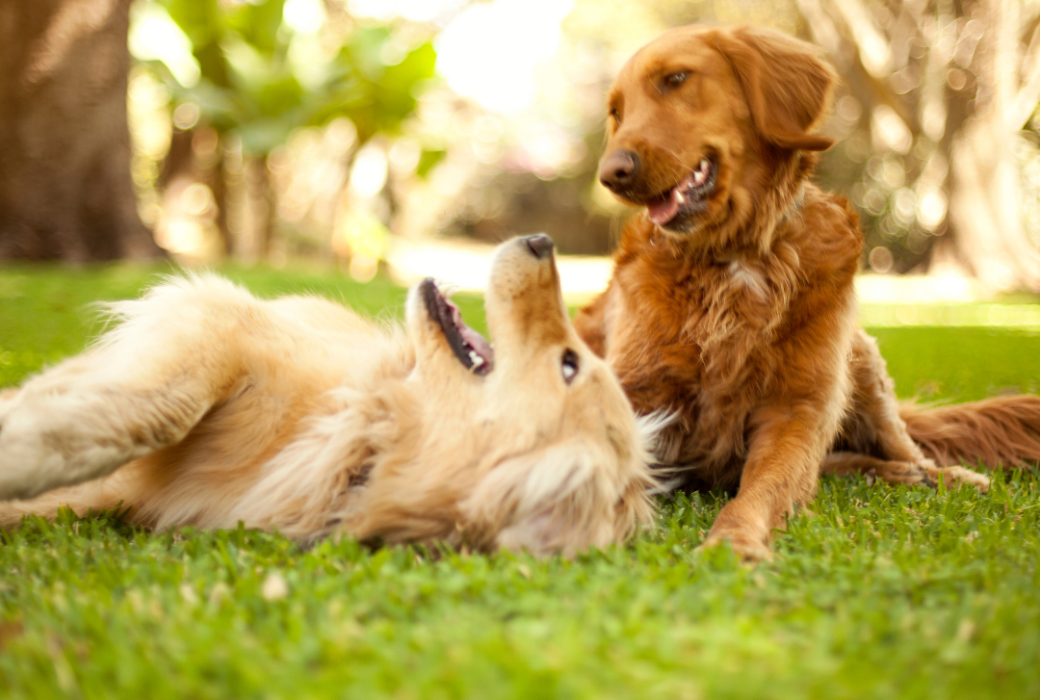Dogs ability to communicate goes far beyond wagging tails and barking. These fascinating creatures possess a secret language that is rich in nuance and complexity. By observing their body language, vocalizations, and social interactions, we can unlock the key to understanding their unspoken messages. In this blog, we will dig deep into the fascinating world of the secret language of dogs and explore how we can better understand and communicate with our four-legged companions.
- Tail Talk: Wagging, Positions, and Tucks
The tail is a prominent indicator of a dog’s emotional state and intentions. Contrary to popular belief, a wagging tail doesn’t always signify happiness. The position and speed of the wag can provide important clues. A high and rapid wag typically denotes excitement or arousal, while a slow and low wag can indicate insecurity or submission.
Furthermore, the tail’s position is also significant. A high, stiff tail signals confidence and assertiveness, while a tucked tail suggests fear or anxiety. It’s crucial to pay attention to the overall body language to interpret the meaning accurately.
- Ears and Eyes: Windows to a Dog’s Emotions
Dogs communicate a great deal through their ears and eyes. Erect and forward-facing ears often indicate attentiveness or curiosity, while flattened or backward ears may suggest fear or submission. Ears held slightly to the side can convey a relaxed or content state.
Similarly, the eyes hold important clues. Direct eye contact can be perceived as a challenge or threat in the canine world, especially if accompanied by a fixed, intense stare. Conversely, soft eyes and averted glances signal friendliness and submissiveness.
- Vocalizations: Barks, Growls, and Howls
Barking is a primary form of vocal communication for dogs, but it’s not a one-size-fits-all language. The pitch, intensity, and duration of barks can vary depending on the context. A high-pitched, repetitive bark might indicate excitement, while a deep, prolonged bark can signify warning or aggression.
Growls are often misunderstood but play a crucial role in dog communication. A low, rumbling growl can be a sign of displeasure or warning, while a high-pitched growl might indicate fear or pain. Understanding the context and accompanying body language is vital for interpreting vocalizations accurately.
- Canine Body Language: Postures and Movements
Dogs have a remarkable ability to convey their intentions through body language. A confident and dominant dog typically stands tall, with weight evenly distributed and head held high. On the other hand, a submissive dog might lower its body, tuck its tail, and avert its gaze.
Playful dogs exhibit a “play bow,” where they lower their front end while keeping their rear end raised, signaling an invitation to play. Rapid movements, such as bouncing or quick side-to-side motions, indicate excitement, while slow and deliberate movements convey caution or suspicion.
- Scents and Pheromones: The Invisible Language
Dogs possess an incredible sense of smell, which is central to their communication. They can detect pheromones and subtle scents that humans cannot perceive. By sniffing one another’s rear ends, dogs gather information about each other’s identity, health, and emotional state. They also mark their territories with urine, leaving behind chemical messages for other dogs.
While dogs may not converse with words, they possess a secret language of their own, built on a combination of non-verbal cues, vocalizations, body language, and scent communication. By paying close attention to their body language, vocalizations, and scent cues, we can better understand their emotions, intentions, and needs.

